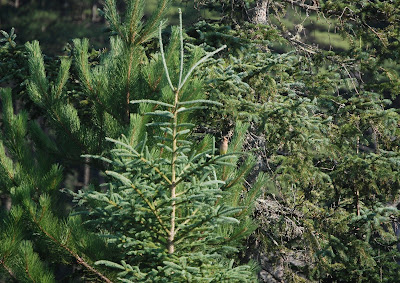Thurs July 8
We try to attend as many of programs offered by Algonquin’s rangers as possible. Algonquin, in our memory was favorably influenced by the superb programs, guided walks, and self directed nature trails. Their naturalist staff here is the standard by which we still judge such programs offered throughout the US. Liz and I will talk about and compare features in the wild to Algonquin’s “Spruce Bog Boardwalk” from 30 years ago.
Evening slide shows and videos are shown in the theater on the east side of Lake of Two Rivers, about 5 miles away from our campground. On Tuesday evening we went to a program on Beavers in Algonquin. Beavers, a large rodent, are fairly well known to us in Killingworth. We learned that their teeth are orange not from lack of brushing but because they have a coating of iron on them. We also learned that the widespread beaver population has been reduced of late because of the limitations on logging. When an area is logged the growth of Aspen and white birch are the first to come back, and they are beaver favorites.
On Wed evening we went to “The seasons of Algonquin”. Ethan talked of how the different seasons impact the park, and the surroundings. These talks are full of information, and the naturalists are great at communicating it. They say they love, birds or wildflowers or whatever they present, kind of apologetically, and you can tell they really do. They are natural teachers, and their enthusiasm is infectious. The naturalists are assisted by a group of interns who accompany us on walks, assist in talks, etc. I find I shot very few pictures of naturalists so the two I did take pictures of Rachel, and Lev will have to do to illustrate.
Rachel & Lev on a walk
Thursday morning we went on an early morning bird walk, a few miles east of our campground, at the old airfield. There used to be a grass airstrip, long since abandoned, and it offers many great habitats for birds. As we entered the airfield we encountered a habitat with white throated sparrows, and heard their distinctive ”oh OH Canada, Canada, Canada. A little further along we left the woods, and entered the old airfield, we found a perfect habitat for cedar waxwings.
We continued along, with Ethan identifying birds visually and by call, and giving us hints about food and other ways we could find birds at home. The most notable feature of the airfield this time of year was the blueberries and service berries that covered it. Service berries are not edible by humans, but the blueberries were delicious, and there were a hundred acres of them for the picking! At the end of the 
On Thurs..afternoon we went on the Whiskey River stream walk, with Rachel, and Lev. As we walked along the stream, Rachel would pause and identify animals, fish, plants, and trees, and describe interesting facts about them. One of the original rangers in the park, tried to introduce several species of animals to attract hunters, and fishermen. He tried elk, and smallmouth bass. Surprisingly the only species to survive is the bass. It doesn’t occupy the same territory, but both fishes young tend to eat each other. No long-term damage done however.
Lev, just before he found the Grosbeak
Lev turned out to be a real birder, and found us an Evening Grosbeak, while we were out. The days after the fourth of July were extremely hot for everybody. In our region the temperature occasionally got into the mid 90’s,and got down to 21C -68F- at night. It seemed hot to us, and the AC was appreciated, and used, but it was not as hot as at home-thankfully. The heat wave was about to break, and we got a shower just before we finished the walk.

The rain continued on most of the night, not hard but periodically.




No comments:
Post a Comment